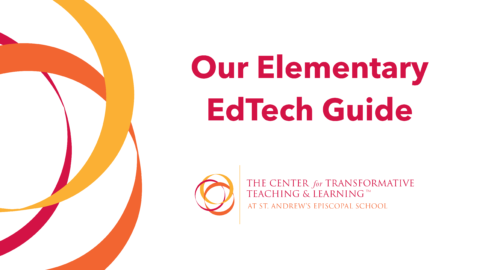The ultimate goal of reading is what we do with the information and ideas that we take in through the written word. This involves high order cognitive engagement and is impacted by many factors including saliency determination, verbal conceptualization, critical thinking, creativity, and reasoning. However, without prolonged practice with the foundational processes of reading, this goal becomes inaccessible to most students even when we work to cultivate these higher order functioning skills. Building an awareness of the many underlying factors that impact reading competency is essential for effective instructional design at any grade level. This is the second of a series of short articles that will endeavor to unpack these factors in response to real questions asked by teachers.
Question 2
How do I continue to test for and build fluency in my students using the findings from research into the science of reading (SoR)?
Perhaps the most frequent conversations I have with teachers making the shift to practices that align with the SoR are centered on the concept of fluency and their feeling that this becomes neglected when lesson time is shared with other elements of word recognition. As one of the five pillars identified by the National Reading Panel (2000) as essential for a comprehensive approach to reading instruction, it is critical that fluency is fully understood by all teachers of reading, and long-held misunderstandings are addressed. For many educators (myself included), fluency has been thought of as synonymous with instantaneous comprehension of any book that could be reasonably expected (judged by whom?) to be read at any age. For years this has been measured using texts that can only show what a child is able to achieve on their own, without explicit instruction.
In mathematics, fluency with multiplication facts literally means that a child has practiced enough with the facts you have taught them (and given opportunity to use and reuse again in class) that they are able to recall the facts without needing to calculate each piece from scratch. When students are faced with something they have not encountered before (which may or may not include using facts they have fluency with), it is called problem-solving, which relies on a very different set of skills and cognitive processes for success.
In reading, however, fluency has often been measured using benchmark assessments such as Fountas and Pinnell or DRA2, which present students with many unfamiliar words not taught in class using leveled texts. This is a measure of problem solving, often called word attack skills, not a measure of fluency with learned semantic units of language, and yet, we find it very hard to let go of this form of assessment to embrace a true fluency-targeted approach. “It may be surprising to many teachers that some of the most valid and reliable measures of a student’s overall reading level include simple measures of word-recognition accuracy and speed, in and out of context” (Rasinski, 2000; Torgesen, Wagner, Rashotte, Burgess, & Hecht, 1997). While the leveled tools can provide insight into the ranking of a child’s relative place as a reader amongst typical peers (a questionable concept in itself), they do little to provide information that can be used in future learning opportunities to target specific reading pillar needs and perhaps most importantly fall into the trap of holding up white, middle-class, mono-lingual learners of reading as the ideal. There is not one pathway and pace toward robust adult reading comprehension.
Tip 1: Assess fluency with letters, words, code patterns, and rules you have explicitly taught, in and out of context through timing articulation of carefully constructed lists and/or decodable readers.
Tip 2: listen to your students read aloud often and document their growing prosody.
The National Reading Panel Report defines fluency as “the ability to read text quickly, accurately, and with proper expression.” While these skills can be indicators of understanding, they are not the meaningful interpretation of a text itself. This became very clear to me a few years ago as I listened to an autistic child, with only echolalia as a means of communication, fluently decode an early second grade leveled book with accuracy, appropriate speed, and prosody. They had mastered the code to this level, but missed access to the language comprehension skills necessary to extract meaning from what was read, or more accurately, had no way to communicate the meaning they accessed. Fluency does not equal understanding, but without it, actively constructing meaning from text is greatly hindered.
This is connected to the idea of cognitive load. The human brain does not multitask. It is simply not efficient juggling multiple factors simultaneously, unless one or more of the factors it is processing is so familiar that it has become an automatic skill. Reading comprehension requires attention to multiple factors including domain knowledge, vocabulary, context, syntax, and fluency with the code made up of alphabetic symbols or logograms. When several of these factors are automatic, it frees up cognitive space for the imagination to envision concepts, places, characters, situations, and potential motivations or implications of what is read. All this is to say, the concerns of teachers are well-founded; the pillar of fluency is as important as any of the others and should not be neglected.
Many of our old strategies designed to build fluency in our students remain validated by the emerging research. The message is to keep the best of what we are already doing and stretch to include decodable reading material and previously missed opportunities to practice rapid naming of letters, words, and phonetic non-words as part of your fluency building repertoire.
- In the early years, fluency building is nurtured through adult modeling. This reading aloud to students needs to continue throughout a child’s school career.
- To build speed and accuracy, “students can practice naming familiar visual symbols (such as letters, numbers, or words) presented in random order” (Wolf et al., 2002). This is known as rapid automatic naming and is effective for increased speed of recognition with letters and words the student already knows.
- Word skills instruction includes “phonemic awareness, word analysis (especially phonemic decoding), sight word vocabulary, and practice to increase fluency while reading.” (Shanahan et al., 2010).
- Repeated reading of passages, first put forward by Dahl & Samuels (1977), still holds true as a strategy for improving fluency, accuracy, and comprehension for students with well established word decoding practice.
- Provide opportunities for oral reading practice with feedback to develop fluent and accurate reading with expression. (Foorman et al., 2016)
- Phrase-cued oral reading provides the scaffold of teacher-marked text to support the development of prosody in young readers.
- Simultaneous oral reading one-to-one with teacher and student, provides flow and structure for a child with emerging fluency.
- Partner reading that includes choral reading with a skilfully teacher-chosen peer, provides an added level of engagement for ongoing practice with fluency for developing readers.
- Sheer volume of reading of a diverse range of literature, as readers build capacity in upper elementary grades, remains a strong predictor of later reading achievement and is fundamental to the ongoing growth of fluency over time. (Van Bergen, Vasalampi, and Torppa, 2020.)
When thinking about instructional approaches to fluency that align with the findings from research, we have to make a shift in our understanding of what fluency is at each stage in the development of reading. The common theme in all of the strategies is practice, practice, practice. However, by shooting for the last strategy on the list before a child has built word or phrase-level fluency, we are setting the stage for unnecessary struggle for early readers, and multilingual readers in particular. Link your fluency assessment with your curriculum – if you are teaching letter/sound correlation, that is what you are assessing for fluency; if you are teaching phrasing and intonation (prosody) with multisyllabic words in context, that is what you are assessing for fluency. Remember that fluency is a measure of speed and accuracy when recognizing and naming previously taught and practiced concepts, not problem-solving unfamiliar rules of phonics, or non-phonetic words you are hoping the child has picked up on their own. The impact of classroom time spent engaging with letters, words, sentences, passages, and full texts in creative ways along with teacher modeling of prosody cannot be overstated. The science of reading does not ignore the role of fluency, it simply makes us question our understanding of what fluency really is and how we should then teach and assess for progress.
Resources:
- Allington, R. & McGill-Franzen, A. (2021). Reading volume and reading achievement: A review of recent research. Reading Research Quarterly. 56. 10.1002/rrq.404.
- Dahl, P. J. R. (1974). An experimental program for teaching high speed word recognition and comprehension. Final Report.
- Foorman, B., Coyne, M., Denton, C., Domino, J., Hayes, L., Justice, L., Lewis, W. & Wagner, R. (2016). Foundational skills to support reading for understanding in kindergarten through 3rd grade. U.S. Department of Education.
- LEXIA. (n.d.). LETRS: Professional learning for educators. https://www.lexialearning.com/letrs
- Samuels, S. J. (1979). The method of repeated readings. The Reading Teacher. 41, 756-760.
- Willis, J. (2008). Teaching the brain to read: Strategies for improving fluency, vocabulary, and comprehension. Association for Supervision and Curriculum Development.
- Wolf, M., O’Rourke, A., Gidney, C., Lovett, M., Cirino, P., & Morris, R. (2002). The second deficit: An investigation of the independence of phonological and naming-speed deficits in developmental dyslexia. Reading and Writing. 15, 43-72. 10.1023/A:1013816320290.
- LETRS professional learning for educators
About the Author
Christine Lewis is the Lower School Teaching and Learning Strategist at St. Andrew’s Episcopal School and the CTTL Lower School Research Lead. Over the past 18 years, she has taught in every grade from kindergarten through fourth grade. Since 2020, Chris has led the early childhood and elementary faculty investigation of research-informed, evidence-driven instructional design for academic growth and student well-being. She is a constant learner with a background in science and a passion for poetry; using both in the service of our youngest learners by taking research into the classroom where the magic happens.




